Search
for
Sort by
Research
180-210 / 1000+ resultsresearch Hair Care Products: Waving, Straightening, Conditioning, and Coloring
Proper haircare and communication with doctors are key to managing hair loss and avoiding damage.

research An Overview of Management of Drug-Induced Hair and Nail Disorders
Cooling the scalp may prevent hair loss from chemotherapy, hair often grows back after treatment, and nail issues usually improve after stopping the drug.

research Hair Diseases: A Big Problem on a Small Surface
Many hair diseases, including those caused by medications and psychological issues, can lead to hair loss and require proper treatment and specialist care.

research Trichotillomania: Clinical Aspects and Treatment Strategies
Behavior therapy and medications, especially clomipramine, can help reduce hair pulling in people with trichotillomania.
research Water-Soluble Polymers in Hair Care
Alkaline hair relaxers damage hair, but cationic and non-ionic polymers can help reduce this damage.
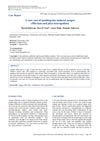
research A Rare Case of Azathioprine Induced Anagen Effluvium and Plica Neuropathica
Azathioprine can cause hair loss and matted hair.
research Health Improvement of Human Hair and Their Reshaping Using Recombinant Keratin K31
Recombinant keratin K31 makes damaged hair thicker, stronger, and straighter.

research Ethnic Hair Update: Past and Present
Dermatologists need to understand African American hair-care practices to better treat their hair and scalp disorders.

research Diseases That Turn African Hair Silky
Certain diseases like AIDS and lupus can make African hair become silky.

research Dermatoscopy of Hair Shaft Disorders
Dermatoscopy is a useful tool for diagnosing hair disorders and can help choose samples for more detailed analysis.

research Hair and Systemic Disease
Hair loss can indicate underlying systemic diseases and addressing these can sometimes reverse the hair loss.

research How Different Is Human Hair? A Critical Appraisal of Global Hair Fibre Characteristics and Properties Towards Defining a More Relevant Framework for Hair Type Classification
Human hair varies widely and should be classified by curl type rather than race.

research Prevalence and Etiology of Central Centrifugal Cicatricial Alopecia
CCCA is a common scarring hair loss in African descent women, possibly linked to genetics, hair care practices, and health issues like diabetes.
research Evaluation of Surface Structure and Morphological Phenomena of Caucasian Virgin Hair with Atomic Force Microscopy
AFM can diagnose hair disorders by revealing detailed hair surface changes.

research Cicatricial Marginal Alopecia: Is It All Traction?
Traction may not be the only cause of cicatricial marginal alopecia.
research Multidimensional Profiling of Human Body Hairs Using Qualitative and Semi-Quantitative Approaches with SR-XRF, ATR-FTIR, DSC, and SEM-EDX
Body hairs can be used in forensic science and toxicology like scalp hair.
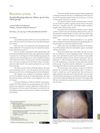
research Frontal Fibrosing Alopecia: Follow-Up of a Brazilian Group
Frontal fibrosing alopecia mostly affects postmenopausal women, with diagnosis often delayed by 3 years.
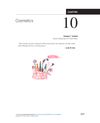
research Cosmetics
The U.S. FDA regulates cosmetics for appearance purposes, but not as strictly as some other countries.
research A Systematic Review on the Lipid Composition of Human Hair
Lipids are crucial for healthy hair, protecting it from damage and breakage.
research Synthesis of a New Amino Acid Derivative with Long-Lasting Hair Shape Control Effects and Elucidation of Its Mechanisms
A new amino acid derivative, ATS, improves hair texture and moisture, making it easier to straighten curly hair.

research Types and Treatment of Hair Loss in Men and Women
The article concludes that different types of hair loss require specific treatments and psychological support is important.

research Current and Emerging Treatment Strategies for Hair Loss in Women of Color
Early treatment helps stop hair loss in women of color.
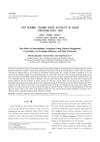
research The Effect of Intermediate Treatment Using Natural Polyphenol Cross-Linker on Perming Efficiency and Hair Protection
Using natural polyphenol cross-linkers like tannic acid and green tea extract in perm treatments improves curling and protects hair.

research Hair Protection Effect of Wild Peach Leaf Extract Addition Treatment After Pigmentation Technique Hair Dyeing Procedure
Wild peach leaf extract improves hair strength, thickness, and shine after dyeing.

research An Ultrastructural Study of Hair Fiber Damage and Restoration Following Treatment with Permanent Hair Dye
Permanent hair dye damages hair but it mostly recovers after 8 weeks; using certain hair care products can help repair it.

research Uses of Onion (Allium Cepa L.) and Aloe Vera (Aloe Barbadensis Miller) Post Hair Dye Treatment
Onion and Aloe vera can help protect hair from damage caused by hair dyes.
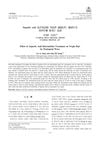
research Effect of Aspartic Acid Intermediate Treatment on Virgin Hair by Permanent Wave
Aspartic acid at 0.75% makes perms more effective and less damaging to hair.

research Aging of Hair
Hair ages due to genetics and environmental factors, leading to graying and thinning, with treatments available for some conditions.

research Hair Disorders in Patients with Cancer
Cancer treatments often cause hair disorders, significantly affecting patients' quality of life, and better management methods are needed.